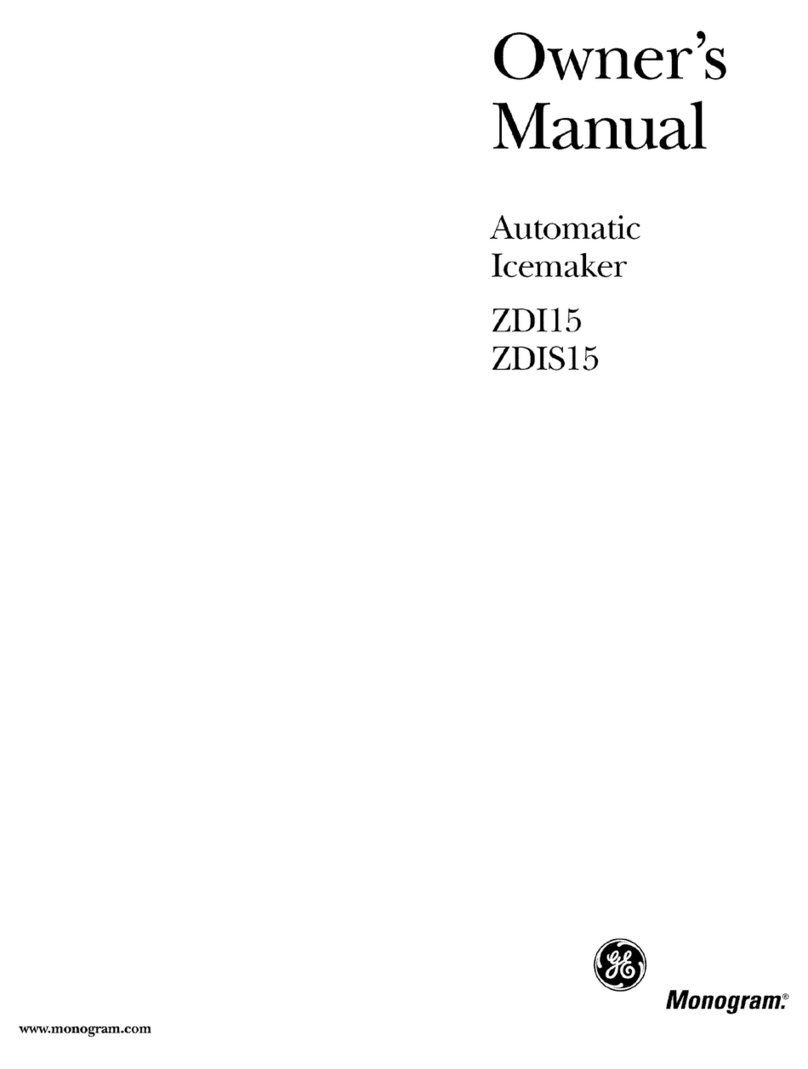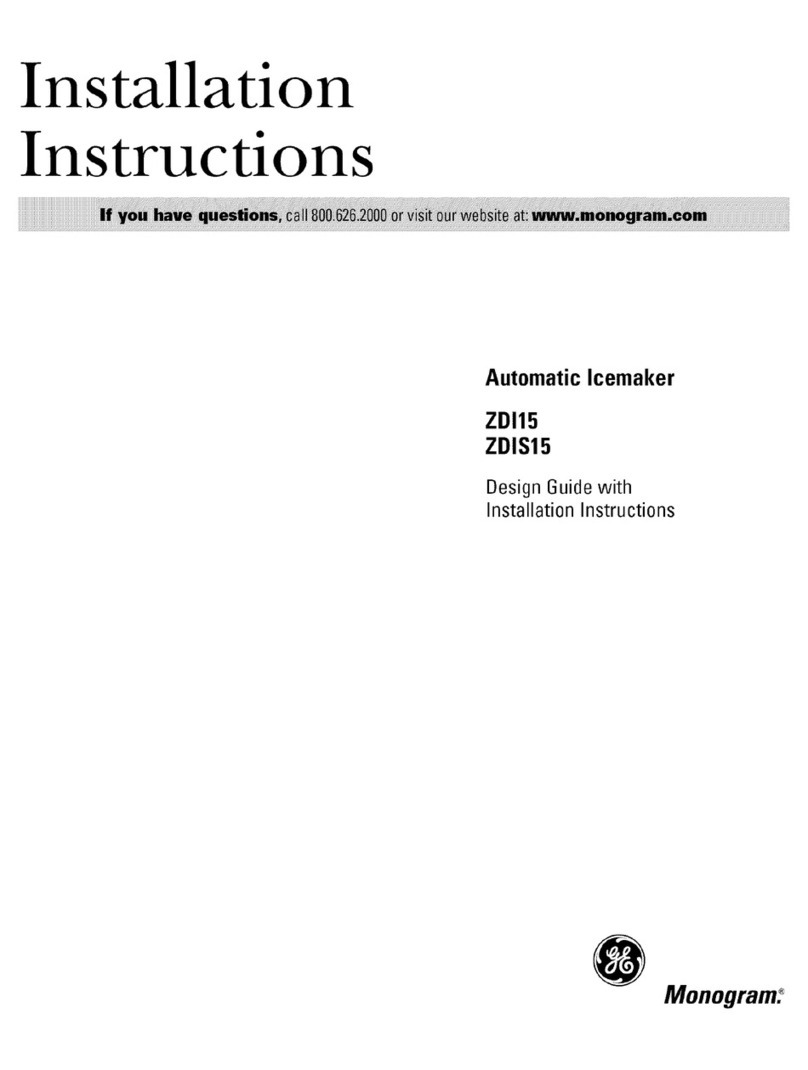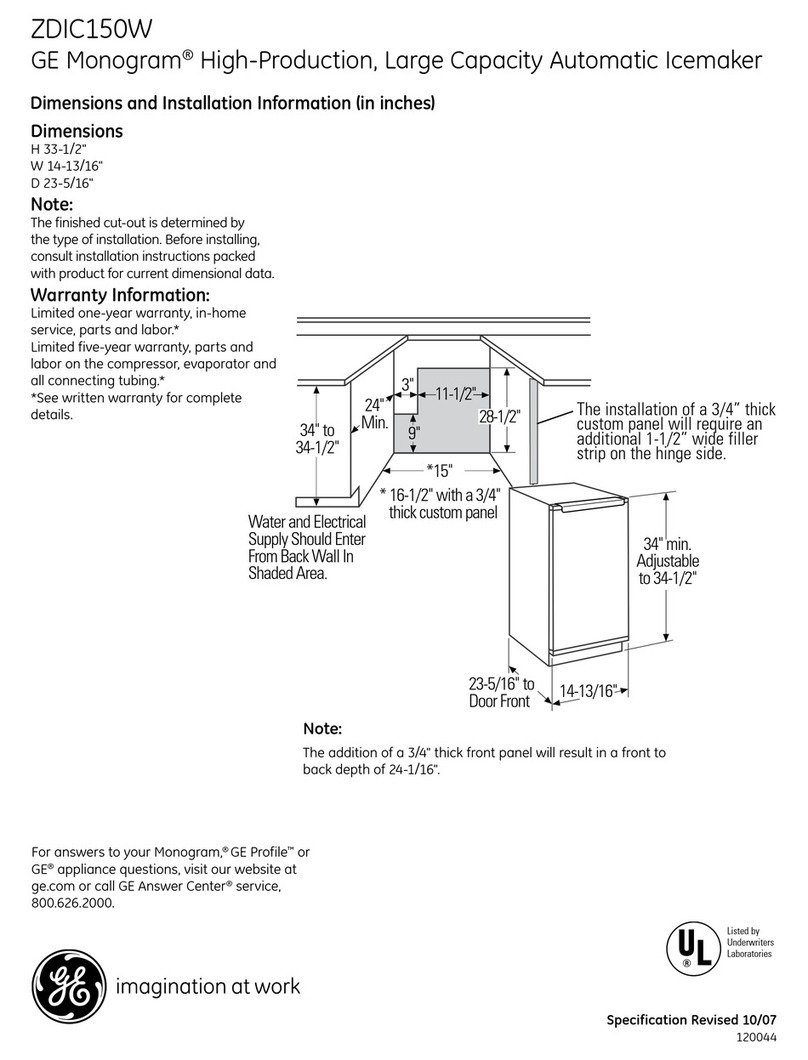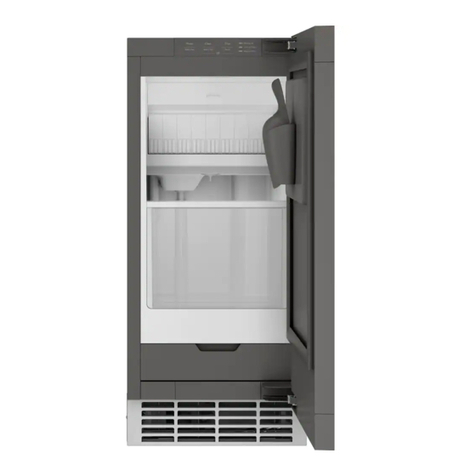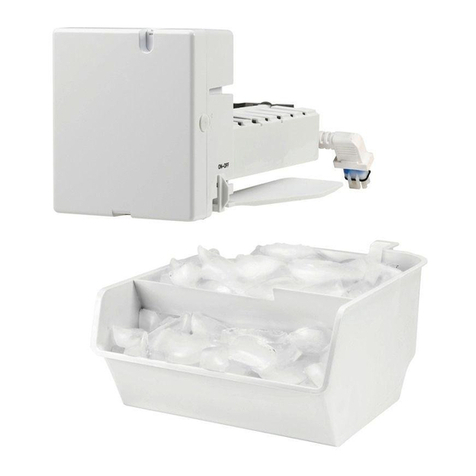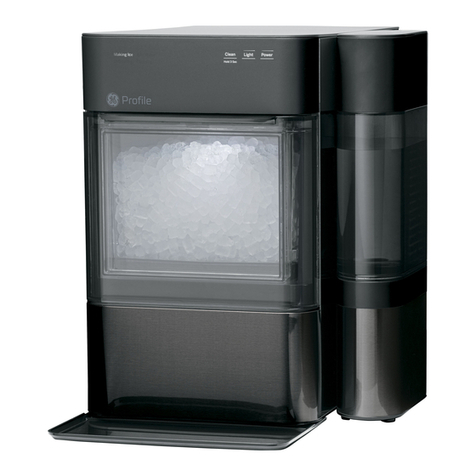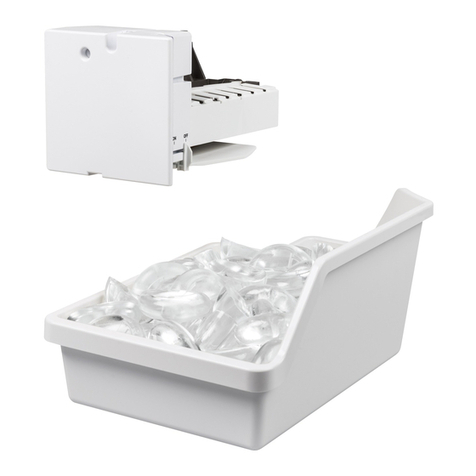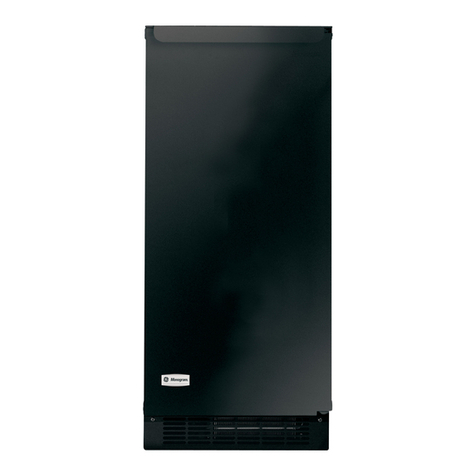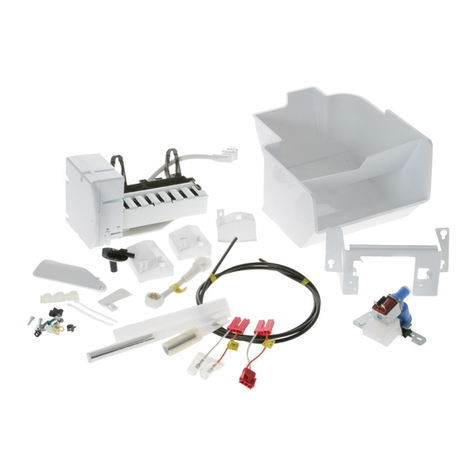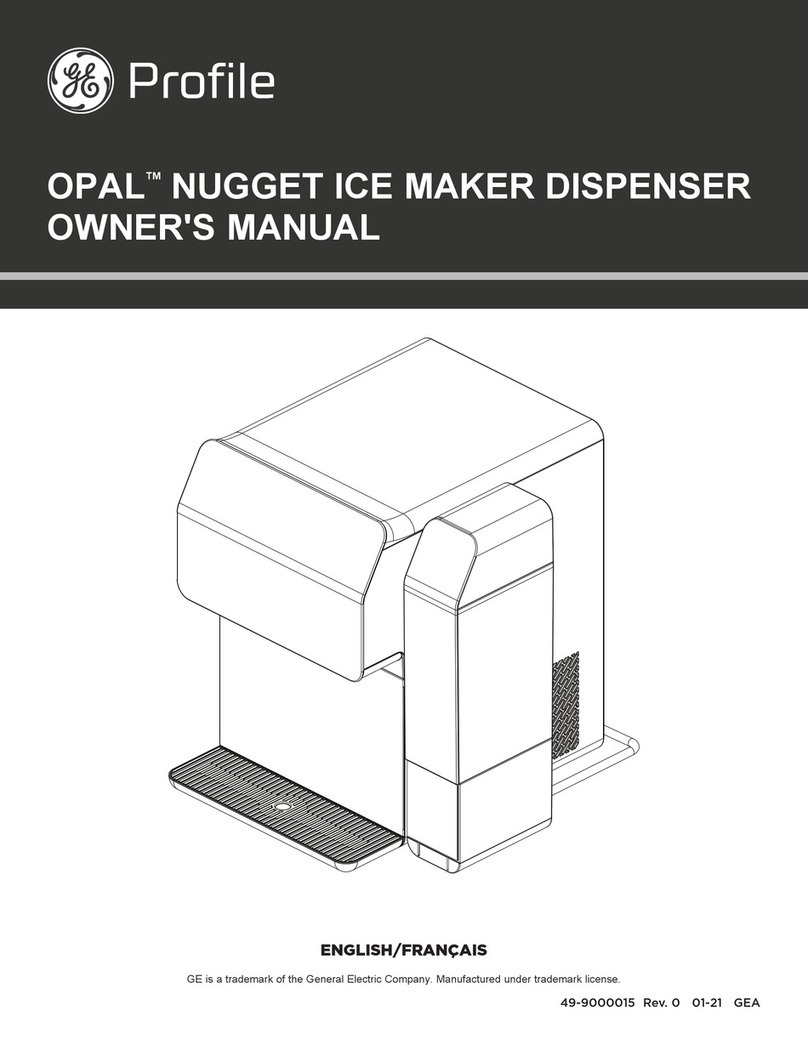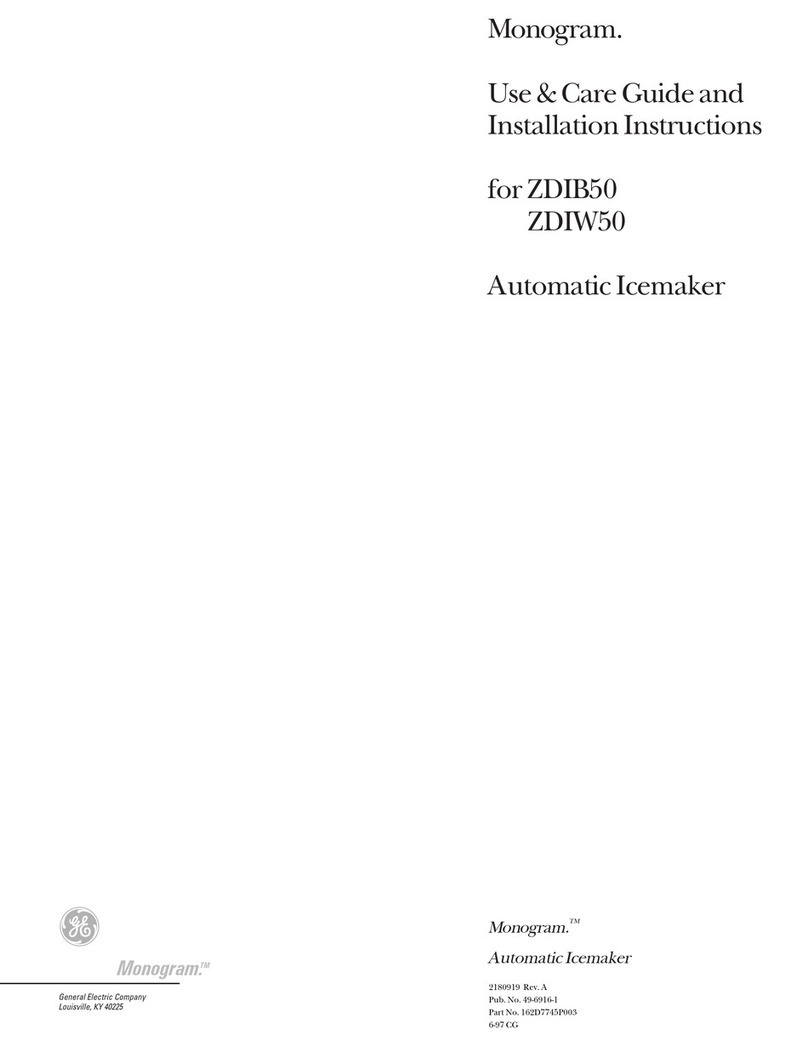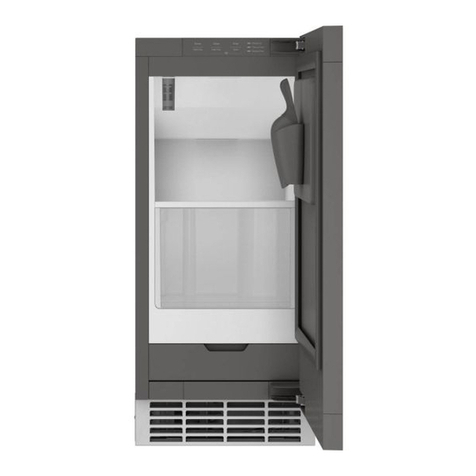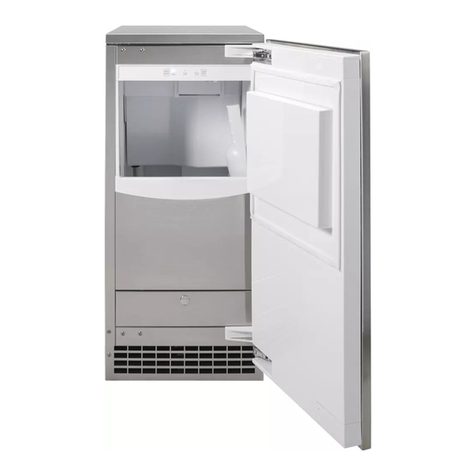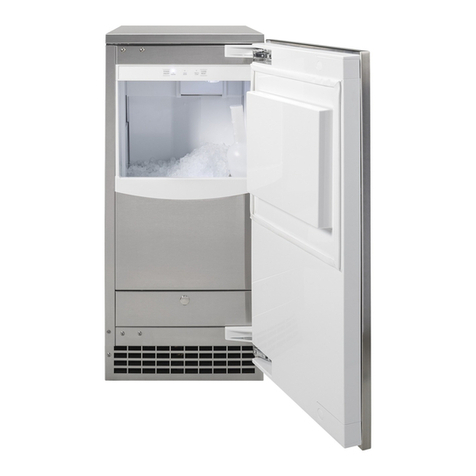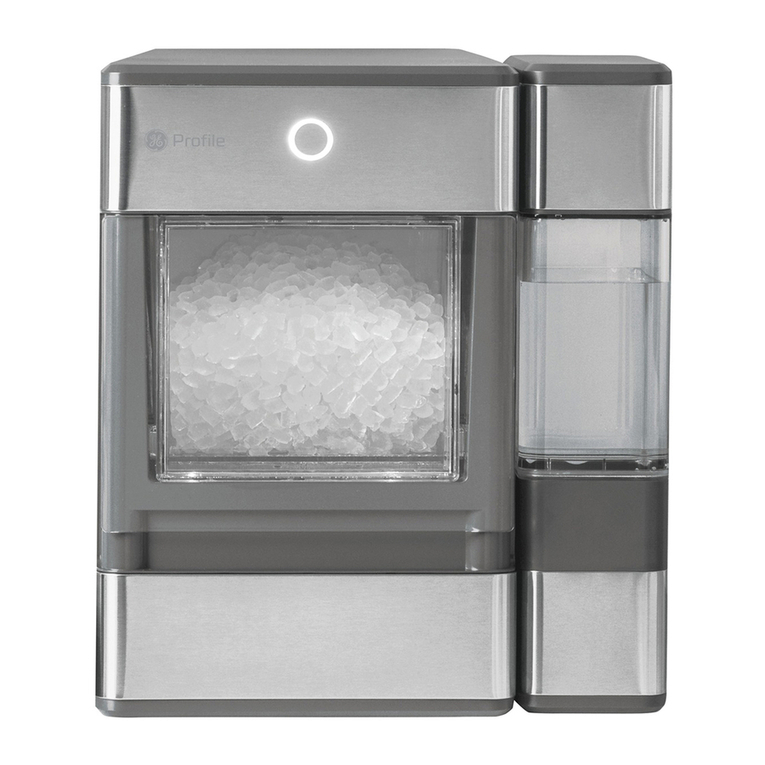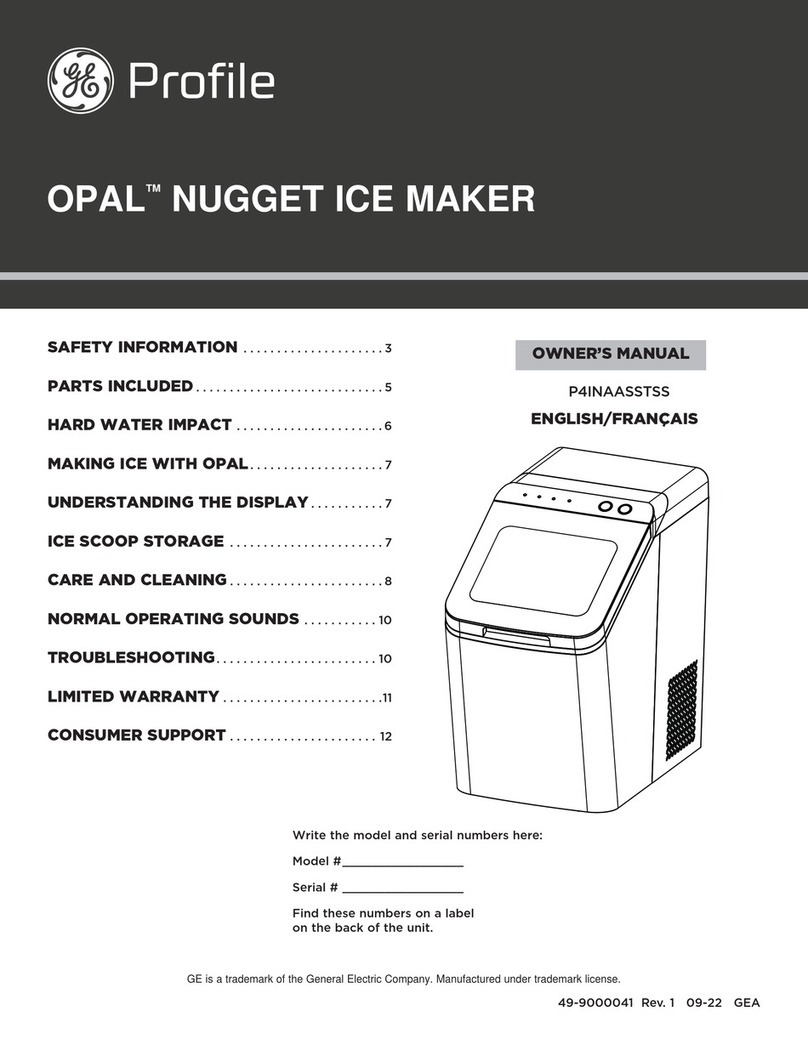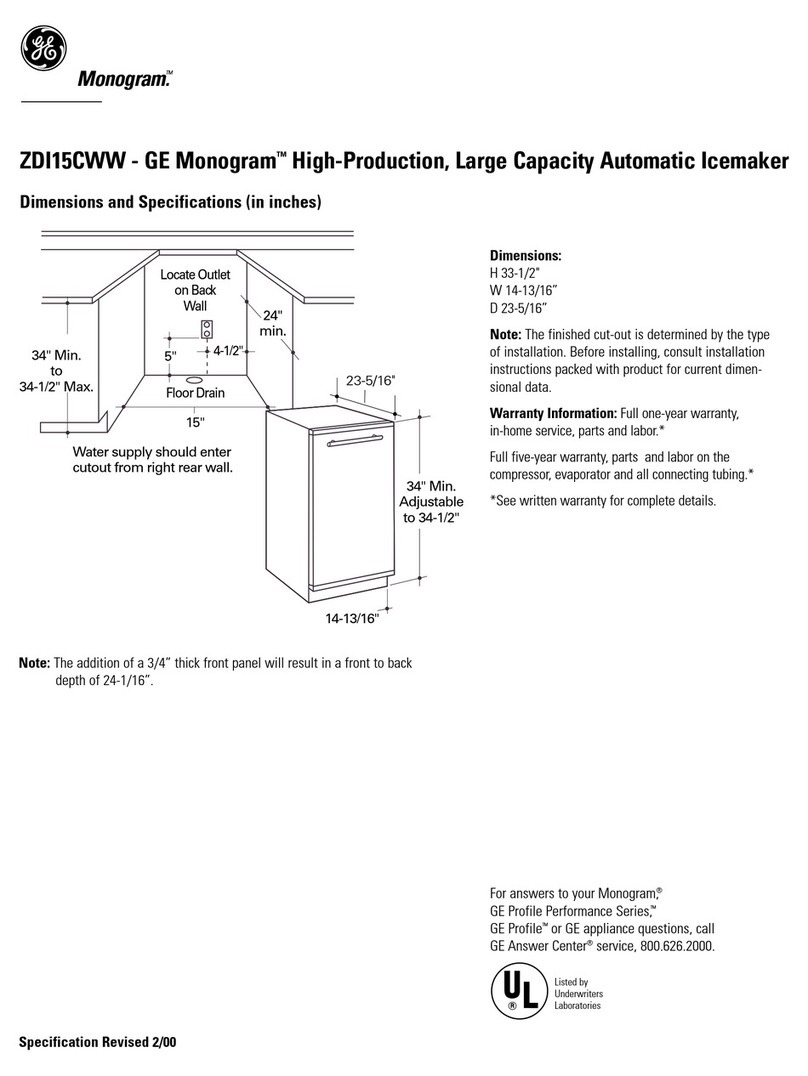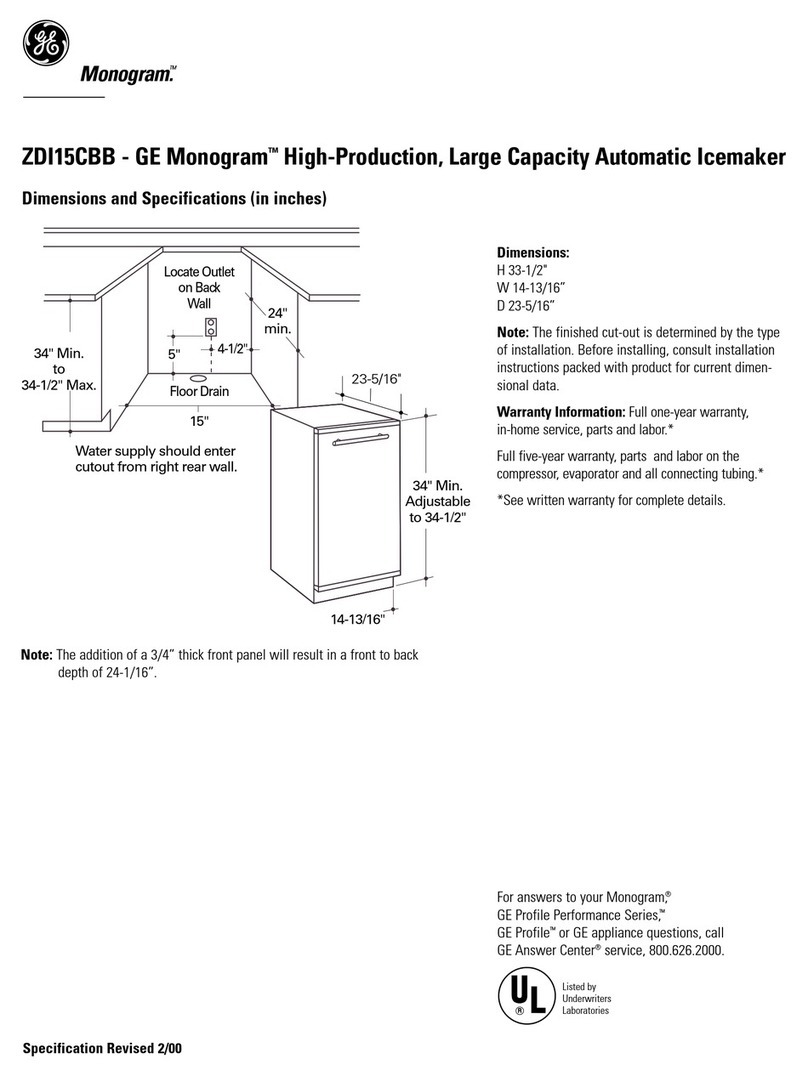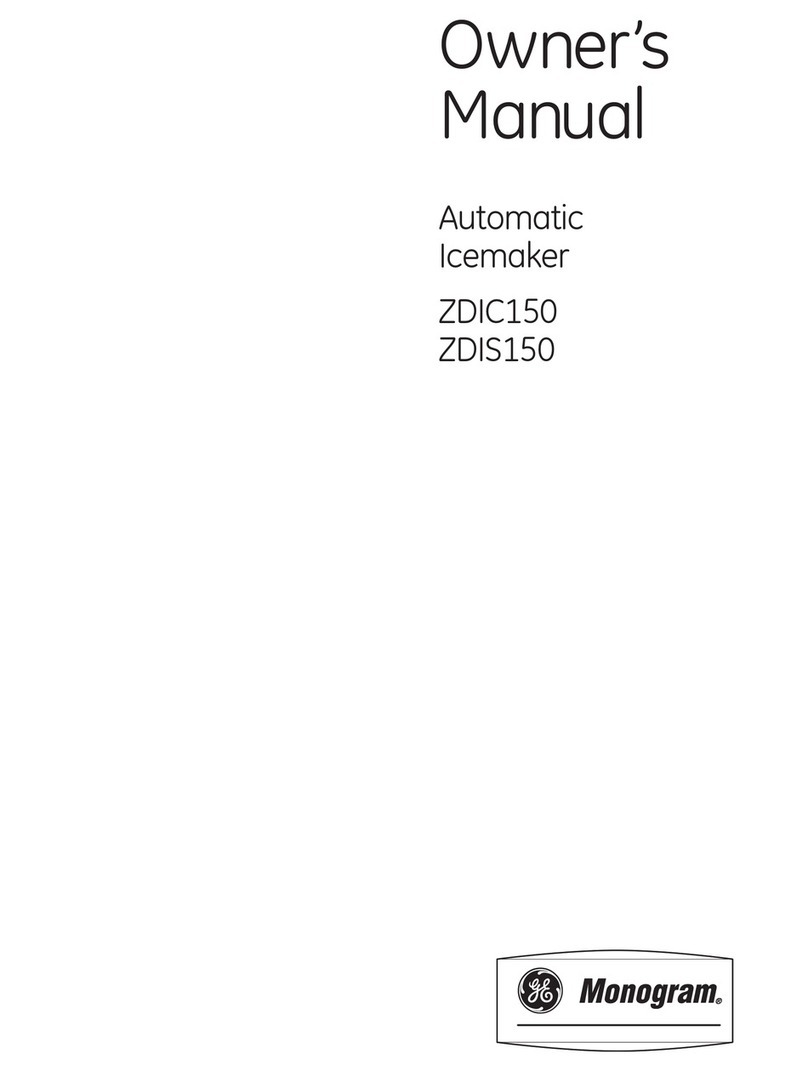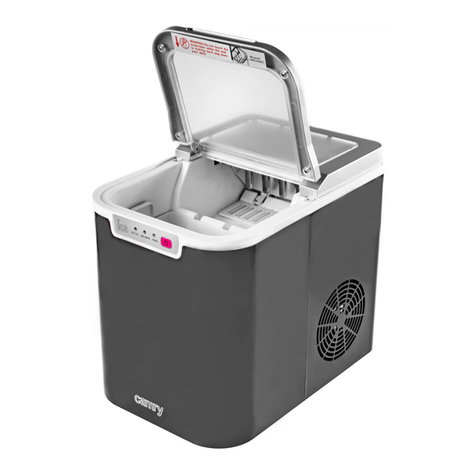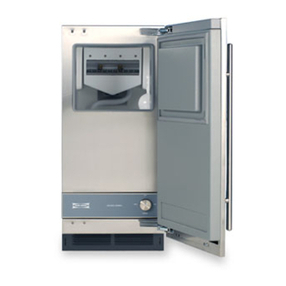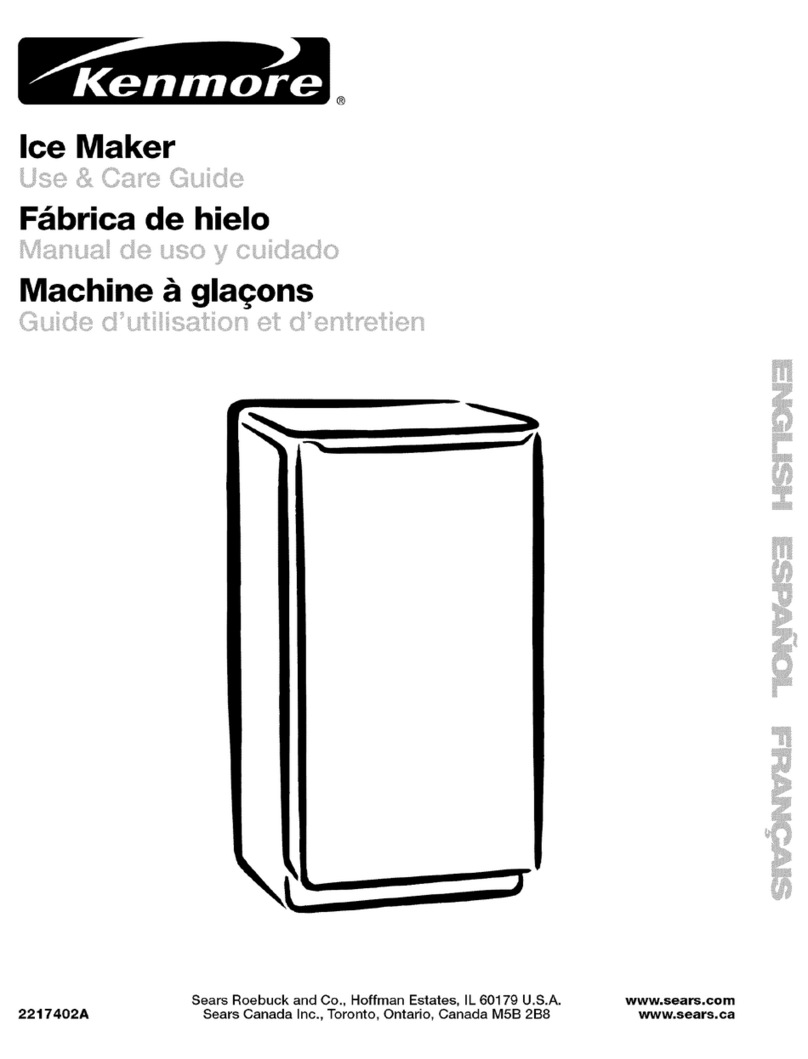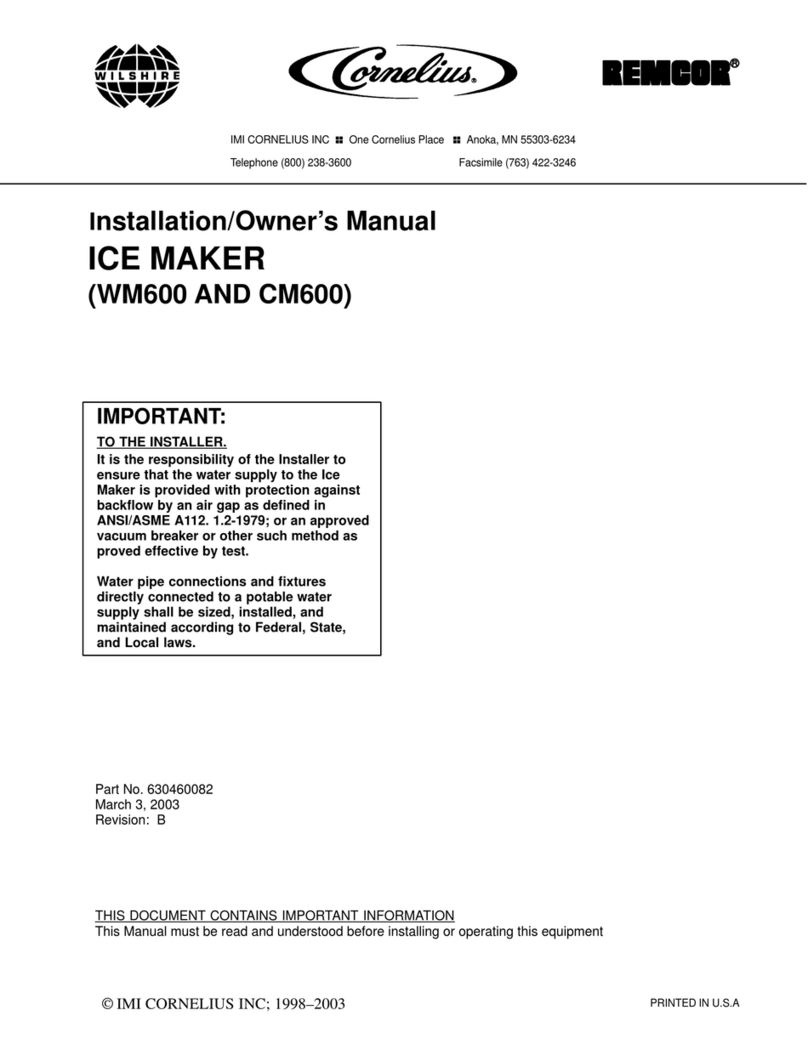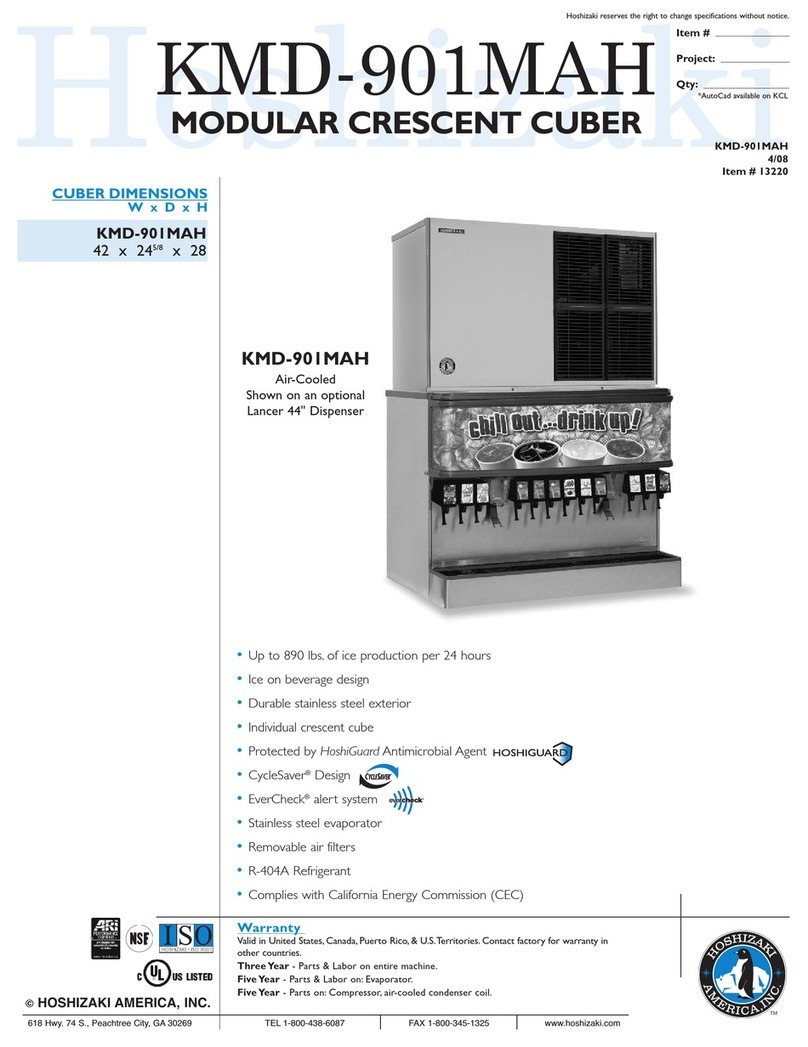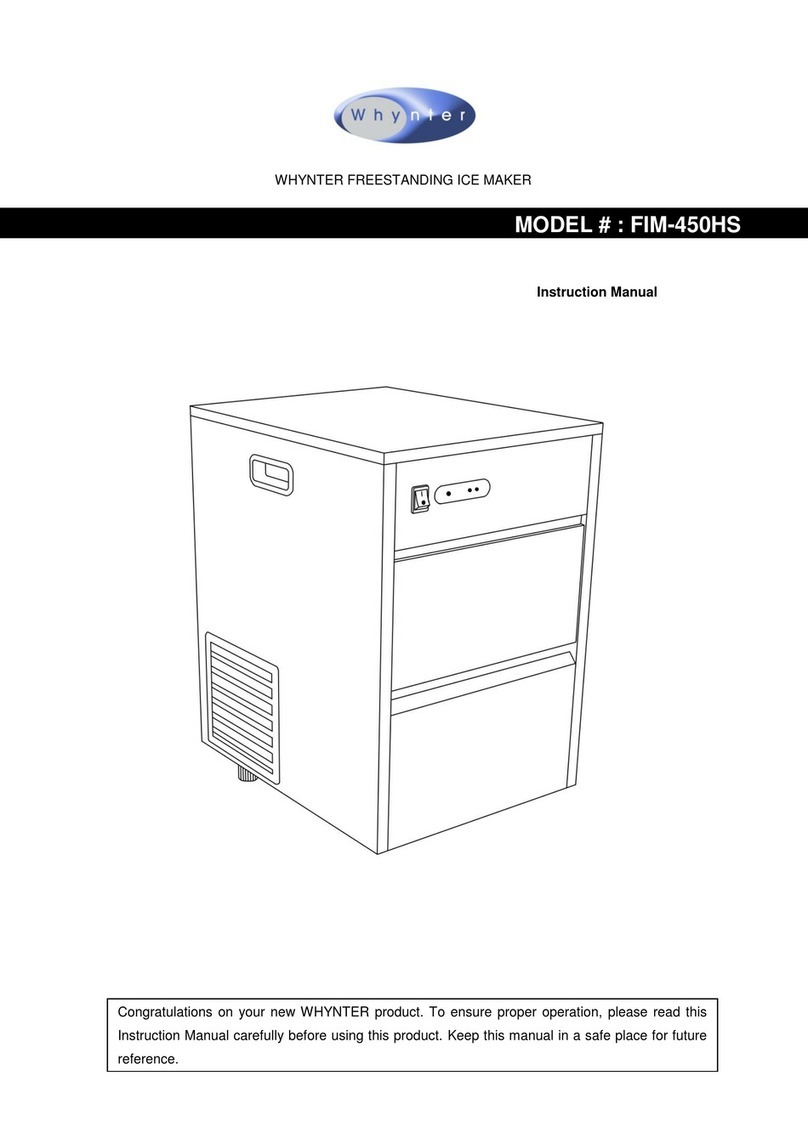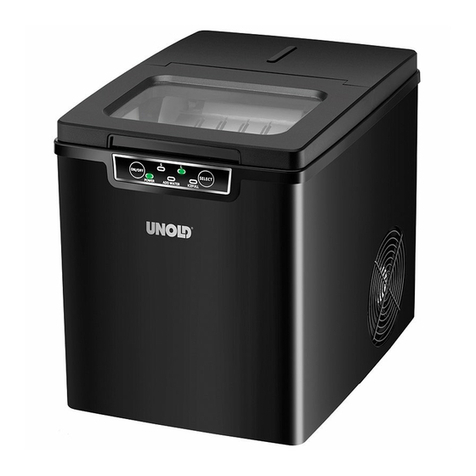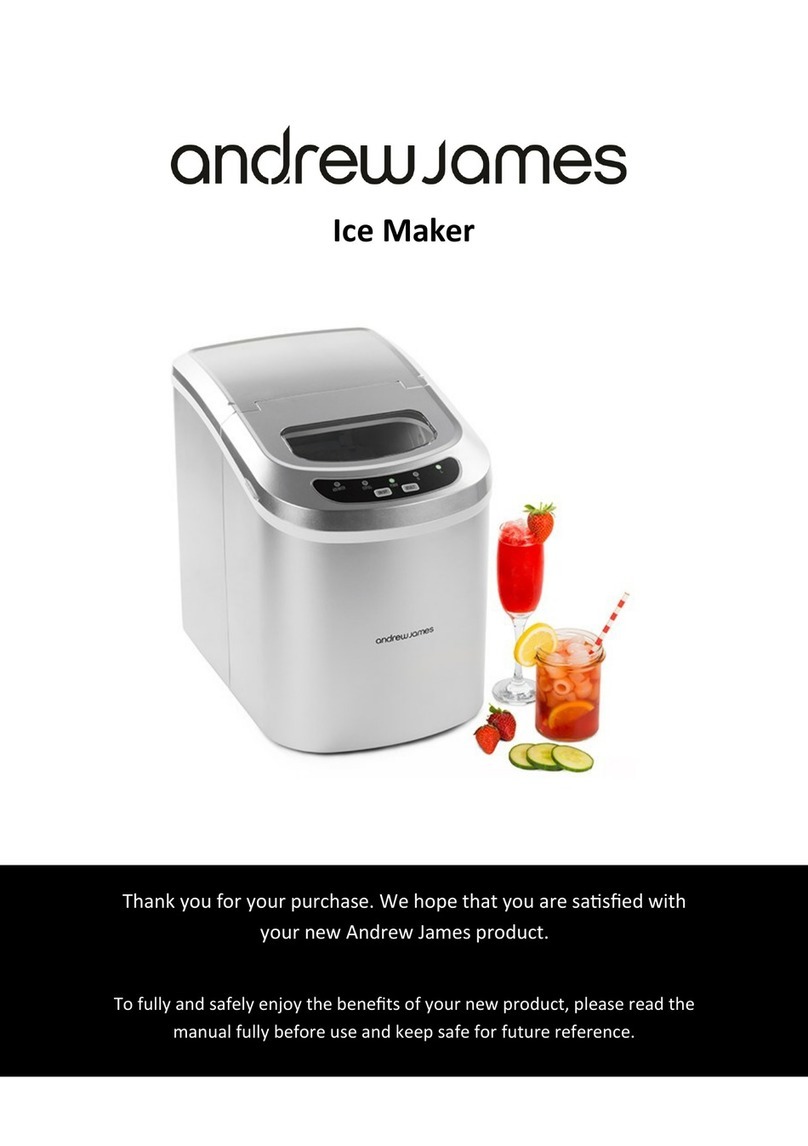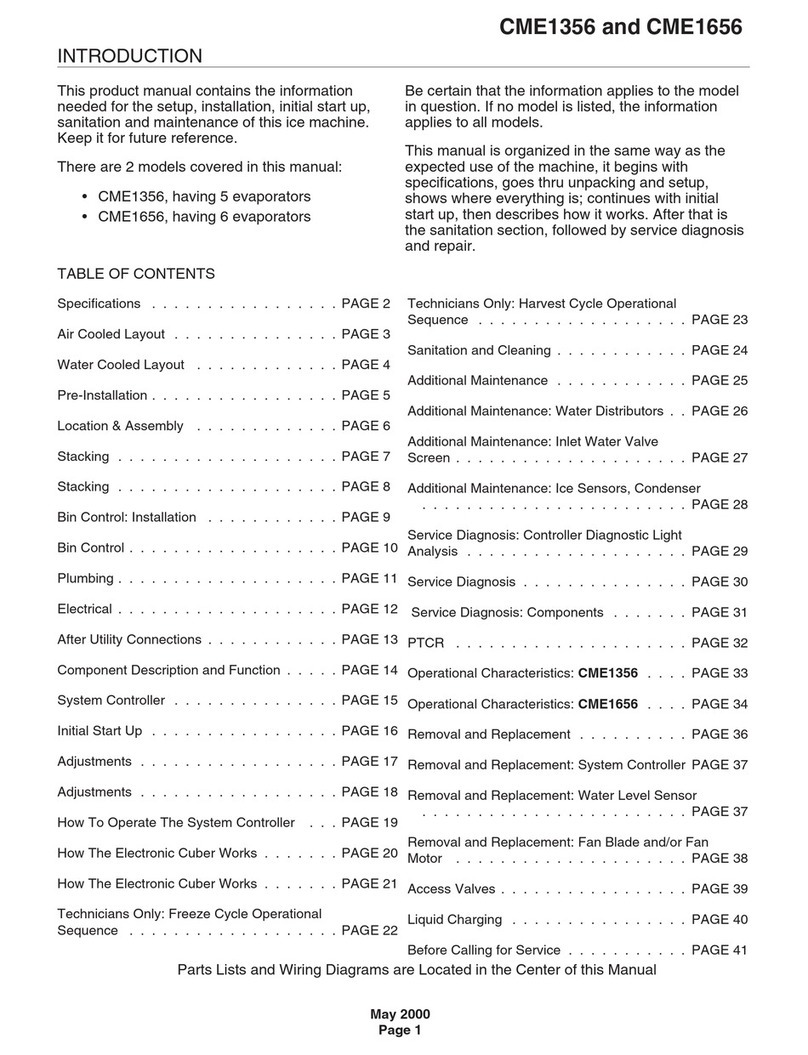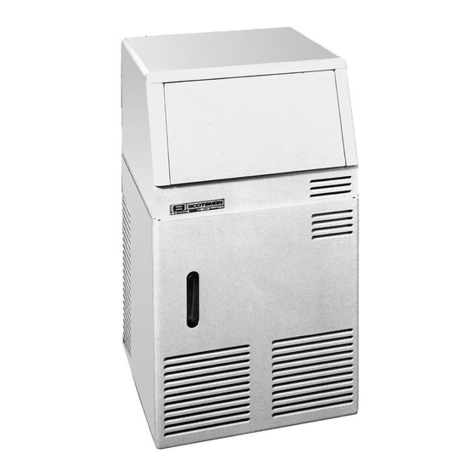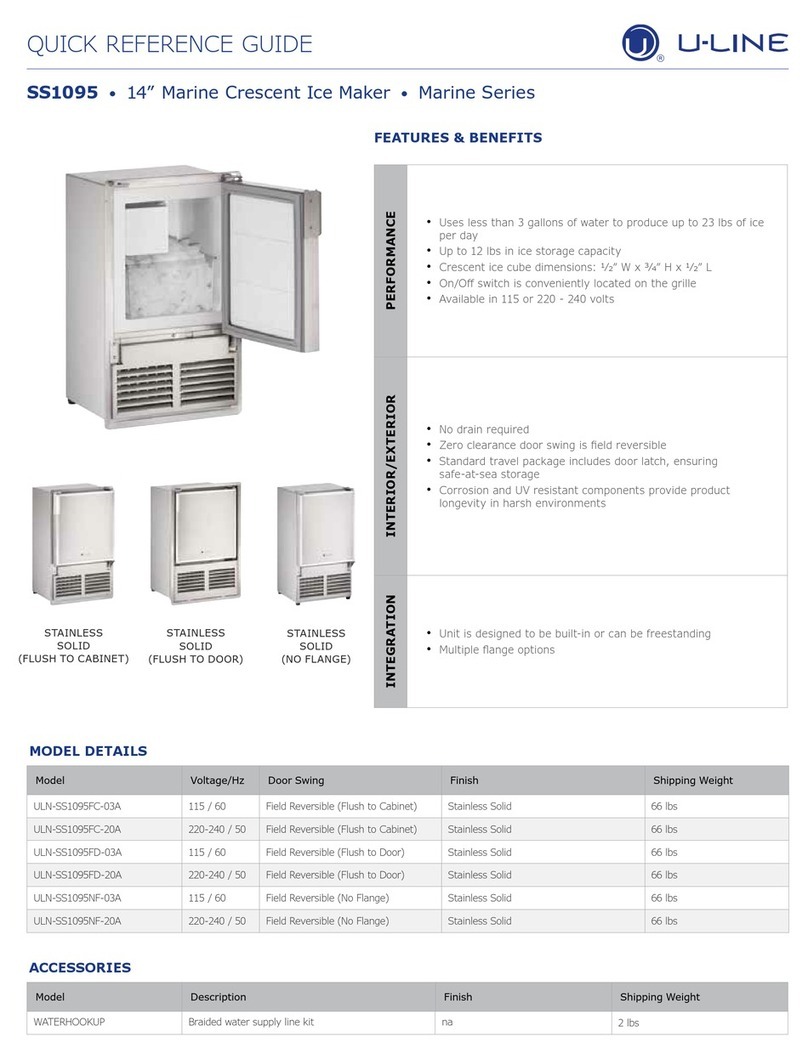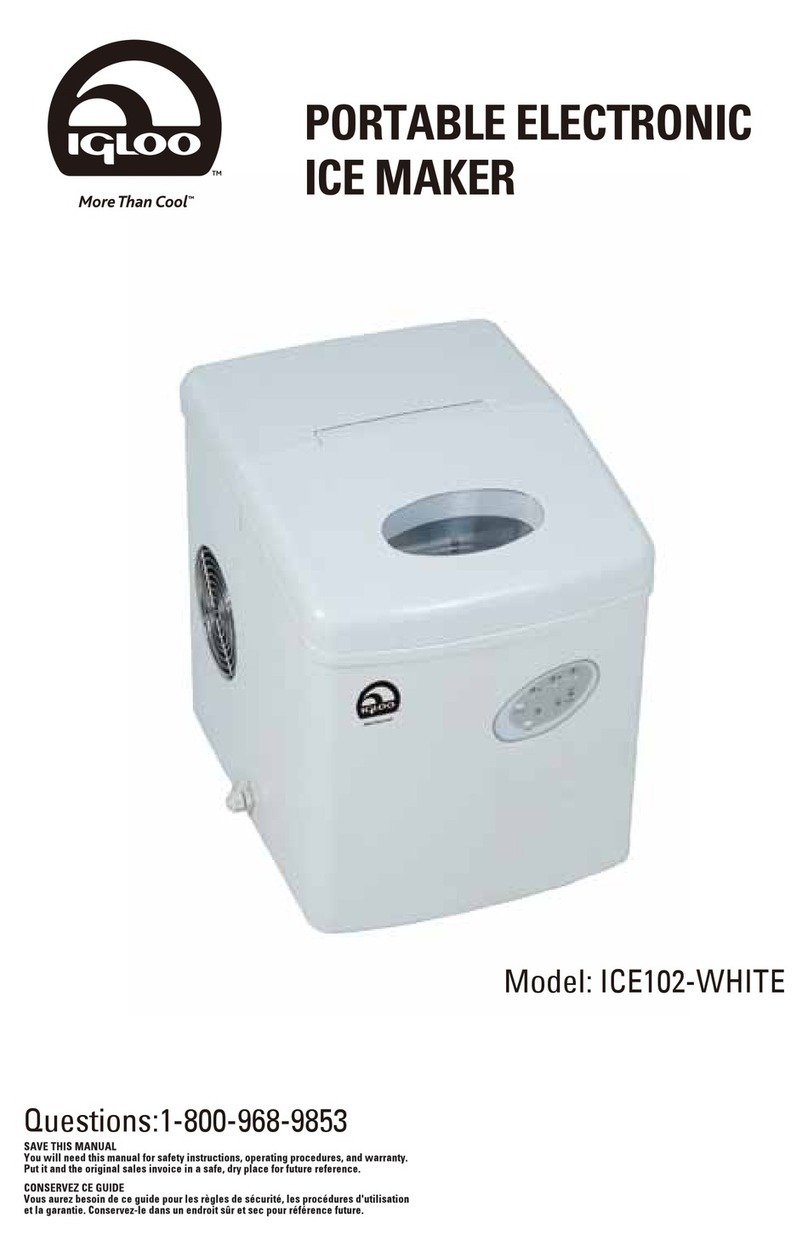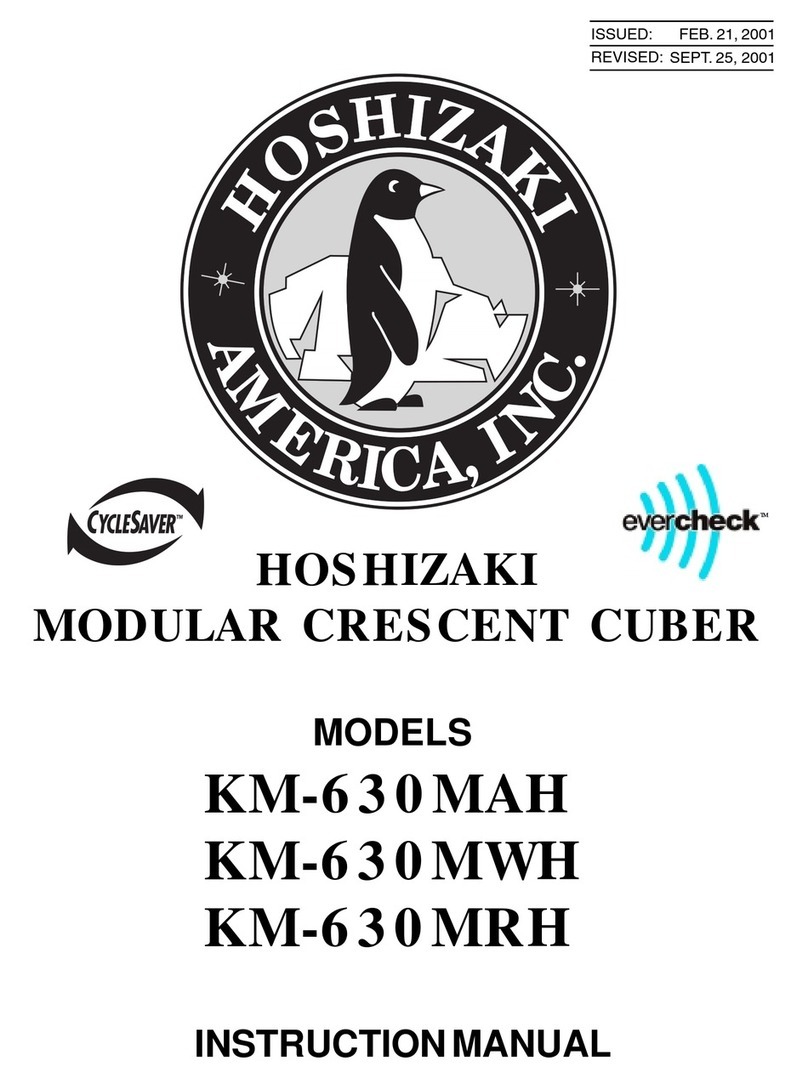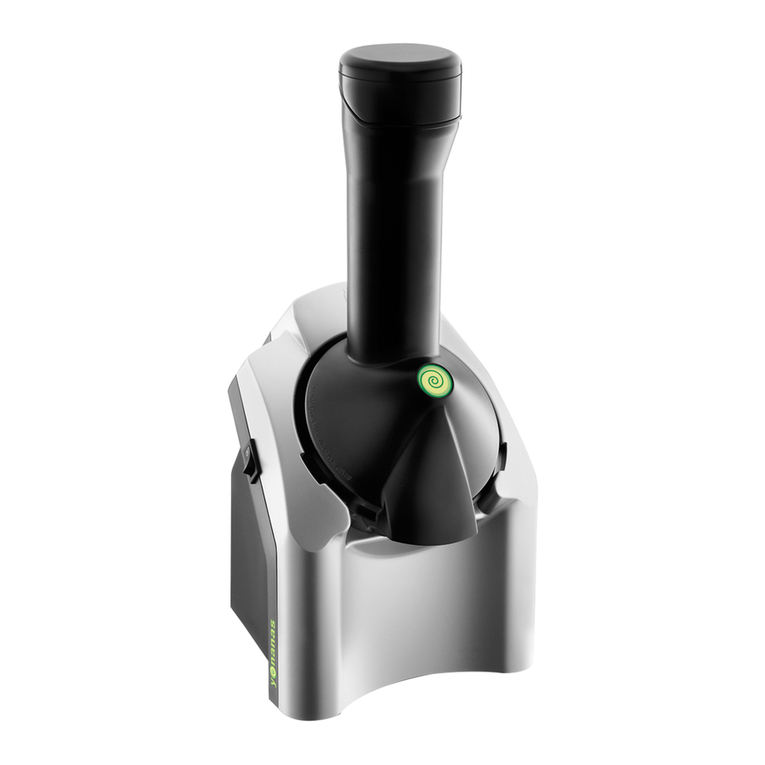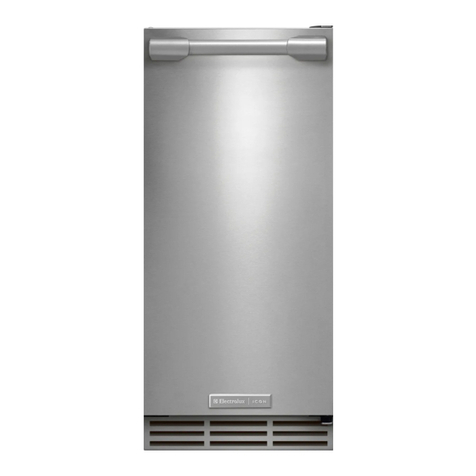HOW TO CONNECT ELECTRICITY
Do not, under any circumstances, cut or
remove the third (ground) prong from the
power cord. For personal safety, this appliance
must be properly grounded.
The power cord of this appliance is equipped
with a 3-prong (grounding) plug which mates
with a standard 3-prong (grounding) wall
outlet to minimize the possibility of electric
shock hazard from this appliance.
Have the wall outlet and circuit checked by a
qualified electrician to make sure the outlet is
properly grounded.
Where a standard 2-prong wall outlet is
encountered, it is your personal responsibility
and obligation to have it replaced with a
properly grounded 3-prong wall outlet.
The icemaker should always be plugged into
its own individual electrical outlet which has a
voltage rating that matches the rating plate.
This provides the best performance and also
prevents overloading house wiring circuits
which could cause a fire hazard from
overheated wires.
Never unplug your icemaker by pulling on the
power cord. Always grip plug firmly and pull
straight out from the outlet.
Repair or replace immediately all power cords
that have become frayed or otherwise
damaged. Do not use a cord that shows cracks
or abrasion damage along its length or at
either end.
When moving the icemaker, be careful not to
roll over or damage the power cord.
6
RACCORDEMENT ÉLECTRIQUE
Ne coupez ni retirez en aucun cas la troisième
broche (mise à la terre) de la fiche du cordon
d’alimentation. Pour votre sécurité, cet
appareil doit être correctement mis à la terre.
Le cordon d’alimentation de cet appareil est
muni d’une fiche à 3 broches (mise à la terre)
qui se branche dans une prise mural ordinaire
à 3 alvéoles (mise à la terre) pour réduire au
minimum les risques du chocs électriques.
Faites examiner la prise de courant et le circuit
par un électricien qualifié pour vous assurer
que la prise est correctement mise à la terre.
Si la prise murale est du type standard à 2
alvéoles, il vous incombe de la faire remplacer
par une prise à 3 alvéoles correctement mise à
la terre.
La machine à glaçons doit toujours être
branché dans sa propre prise de courant, dont
la tension nominale est identique à celle
indiquée sur la plaque signalétique.
Cette précaution est recommandée pour
garantir un rendement optimum et éviter une
surcharge des circuits électriques de la
résidence, ce qui pourrait créer un risque
d’incendie par surschauffe des fils.
Ne débranchez jamais la machine à glaçons en
tirant le cordon d’alimentation. Saisissez
fermement la fiche du cordon et tirez droit
pour la retirer de la prise.
Réparez ou remplacez immédiatement tout
cordon effiloché ou endommagé. N’utilisez
pas un cordon fendillé ou présentant des
signes d’usure.
Lorsque vous déplacez votre machine à glaçons
du mur, faites attention de ne pas la faire
rouler sur le cordon d’alimentation afin de ne
pas l’endommager.
